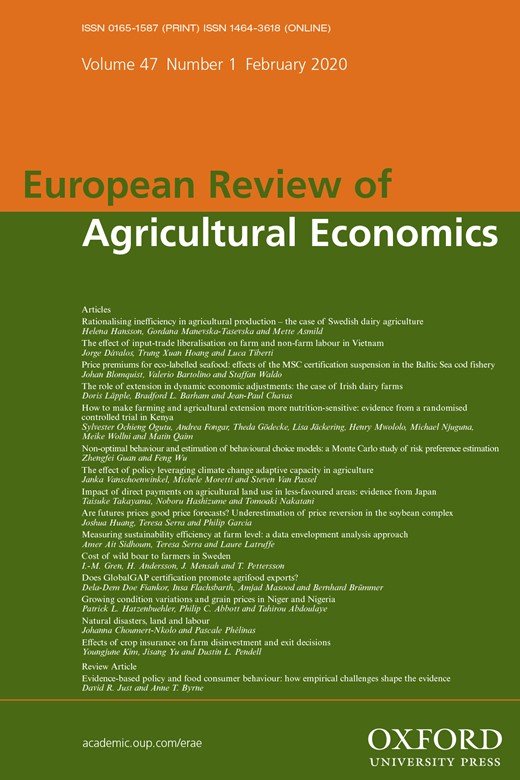Retail Food Economics
As a Research Agricultural Economist in the Food Markets Branch of the USDA, Economic Research Service, I engage in research on the retail food environment. In this strand of my research, I am concerned with food affordability and access, as well as consumer food behavior. I apply theory from behavioral sciences and economic principles to answer novel research questions. I use data from proprietary providers like SafeGraph and Circana, USDA data products like the Food-at-Home Monthly Area Prices (F-MAP), and federally-administrated surveys like the Current Population Survey (CPS) to answer these questions with collaborators from both government and academia.
Changes in concentration, prices, and profits among food retailers over time.
A closer look at the relationship between concentration, prices, and market power in food retail—A monopolistic competition and differentiated products approach
with Xiao Dong (lead and corresponding author) and Joseph V. Balagtas, published in the Applied Economics Perspectives and Policy (2023)
This article examines the determinants and impacts of rising market concentration in food retail. We argue that the differentiated nature of food retail complicates the common assumption that rising market concentration is evidence of growing market power and rising prices. We provide a theoretical explanation for rising market concentration but relatively unchanging market power and prices. We also provide empirical data on prices, gross margins, profit margins, and demand elasticities to support our hypothesis that rising fixed costs have been the main driver of rising market concentration with little impact on market power and prices.
Evidence-based policy and food consumer behaviour: how empirical challenges shape the evidence
with David R. Just (lead and corresponding author), published in the European Review of Agricultural Economics (2019)
Providing evidence to support food policy requires causal identification and demonstration of economic significance. Research methods impact the ability to address these goals, often with substantial tradeoffs between methods. The constraints of food decision contexts impact which methods are feasible, shaping the universe of policy relevant food behaviour research. This relationship is highlighted in the context of four key policy levers: pricing, consumer information, accessibility and regulation of the food environment. This review provides those outside the field a lens for evaluating both the weight of evidence and a guide to what type of evidence is feasible in particular contexts.
Additional Published Work
K. Marchesi, A.T. Byrne, T. Malone, “The Rural Food-Away-from-Home Landscape, 1990–2019.” USDA, Economic Research Service Economic Information Bulletin, 2023.
B. Katare, H. Yim, A.T. Byrne, H.H. Wang, M. Wetzstein, “Consumer willingness to pay for environmentally sustainable meat and a plant-based meat substitute.” Applied Economics Perspectives and Policy, 2022.
A.T. Byrne and D.R. Just, “Food Consumer Trends: Food Experience, Pleasure, and Policy in the U.S.” in Food and Experiential Marketing: Pleasure, Wellbeing and Consumption (Wided Batat, ed.), Routledge, 2019 (book chapter; full text available in English and French)
Working Papers and Works in Progress
A.T. Byrne, X. Dong, J. Handbury, E. James, *K. Meckel, “Retailer SNAP Adoption and Household Expenditure Patterns” (authors are listed alphabetically, *indicates corresponding author)
A.T. Byrne, B. Katare, J. Lowery, “Equitable Treatment But Inequitable Spillovers: Heterogeneous Effects of Medicaid Expansion on Food Security Measures”
J.H. Quintero, A.T. Byrne, T. Malone, and C.W. Carpenter, “How public transportation investments alter food-at-home and food-away-from-home decisions”
A. Okrent, M. Sweitzer, C. Zhen, A.T. Byrne, and M. K. Muth, “Getting the Price Right: Analyzing and Comparing Food Prices Over Time and Space”
L. Nguyen, A.T. Byrne, H.T.K. Hoang, and R.M. Nayga, “Household Food Insecurity and Perceptions of Retail Food Price Fairness in the U.S.”

